Holding a gambling harm prevention session for youth requires a sensitive, engaging, and informative approach that is both age-appropriate and informative. The goal is to help young people understand the risks associated with gambling, equip them with tools to make responsible choices, and encourage healthy coping strategies. Here’s a step-by-step guide to organizing and conducting an effective gambling harm prevention session for youth:
1. Set Clear Objectives
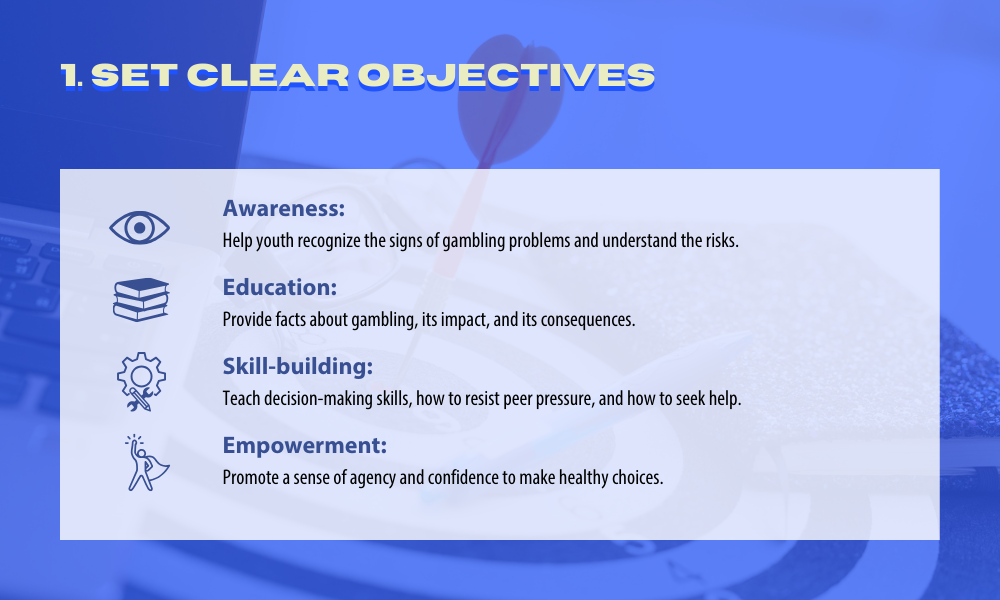
Awareness: Help youth recognize the signs of gambling problems and understand the risks.
Education: Provide facts about gambling, its impact, and its consequences.
Skill-building: Teach decision-making skills, how to resist peer pressure, and how to seek help.
Empowerment: Promote a sense of agency and confidence to make healthy choices.
2. Know Your Audience
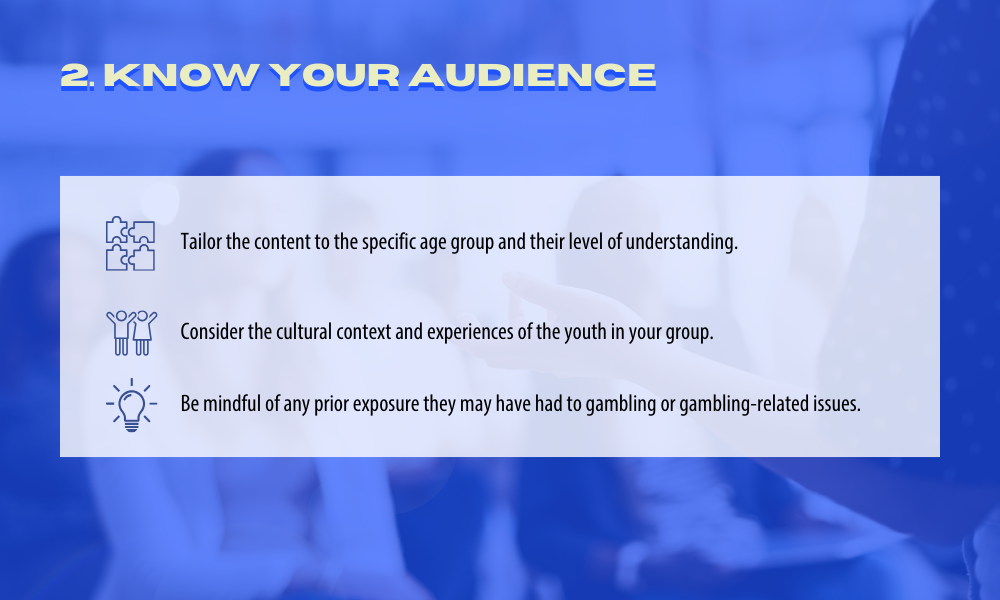
Tailor the content to the specific age group and their level of understanding.
Consider the cultural context and experiences of the youth in your group.
Be mindful of any prior exposure they may have had to gambling or gambling-related issues.
3. Create an Engaging and Interactive Environment
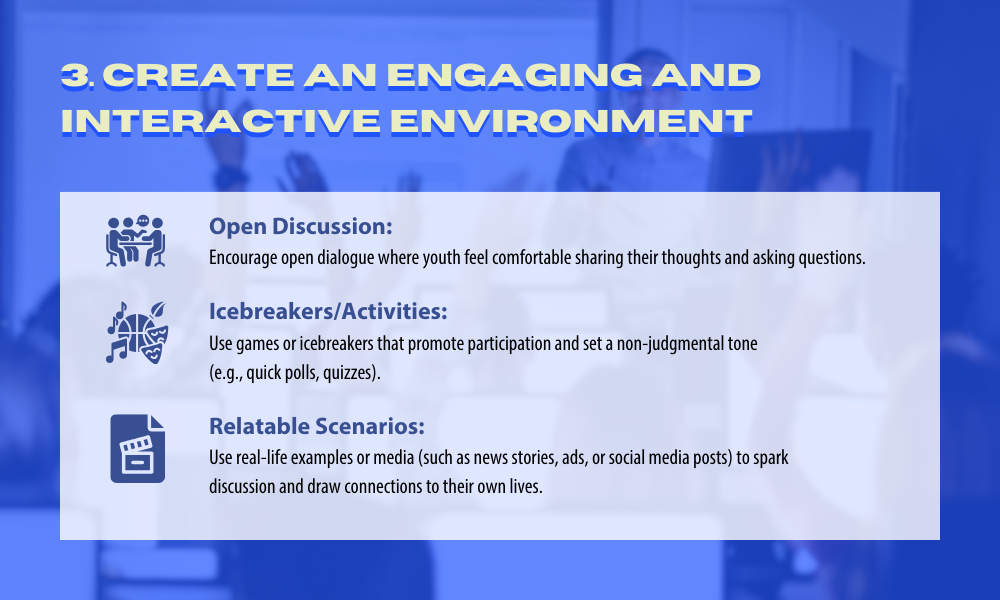
Open Discussion: Encourage open dialogue where youth feel comfortable sharing their thoughts and asking questions.
Icebreakers/Activities: Use games or icebreakers that promote participation and set a non-judgmental tone (e.g., quick polls, quizzes).
Relatable Scenarios: Use real-life examples or media (such as news stories, ads, or social media posts) to spark discussion and draw connections to their own lives.
4. Present Key Information on Gambling Risks

What is Gambling? Define gambling and give examples (e.g., sports betting, online gaming, scratch cards, casinos).
Gambling Myths: Dispel common misconceptions, such as the idea that gambling is a way to ”get rich quick” or that luck can control outcomes.
Signs of Gambling Harm: Explain how gambling can negatively affect mental health, relationships, finances, and overall well-being.
The Odds: Use statistics to explain the odds of winning vs. losing, emphasizing that gambling is designed to benefit the house (casino, bookmaker, etc.), not the player.
5. Discuss the Impact of Gambling
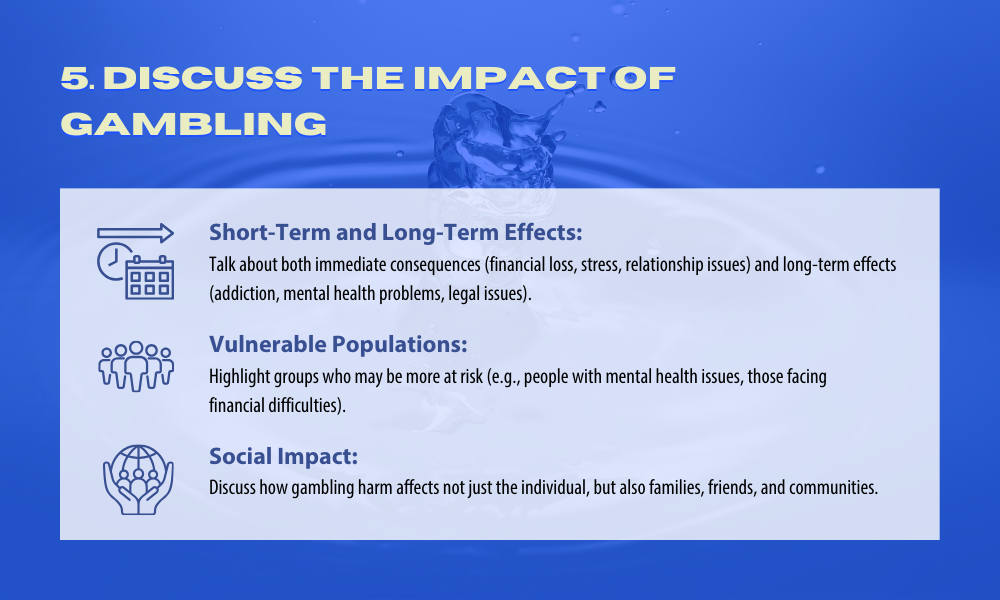
Short-Term and Long-Term Effects: Talk about both immediate consequences (financial loss, stress, relationship issues) and long-term effects (addiction, mental health problems, legal issues).
Vulnerable Populations: Highlight groups who may be more at risk (e.g., people with mental health issues, those facing financial difficulties).
Social Impact: Discuss how gambling harm affects not just the individual, but also families, friends, and communities.
6. Promote Healthy Coping Strategies
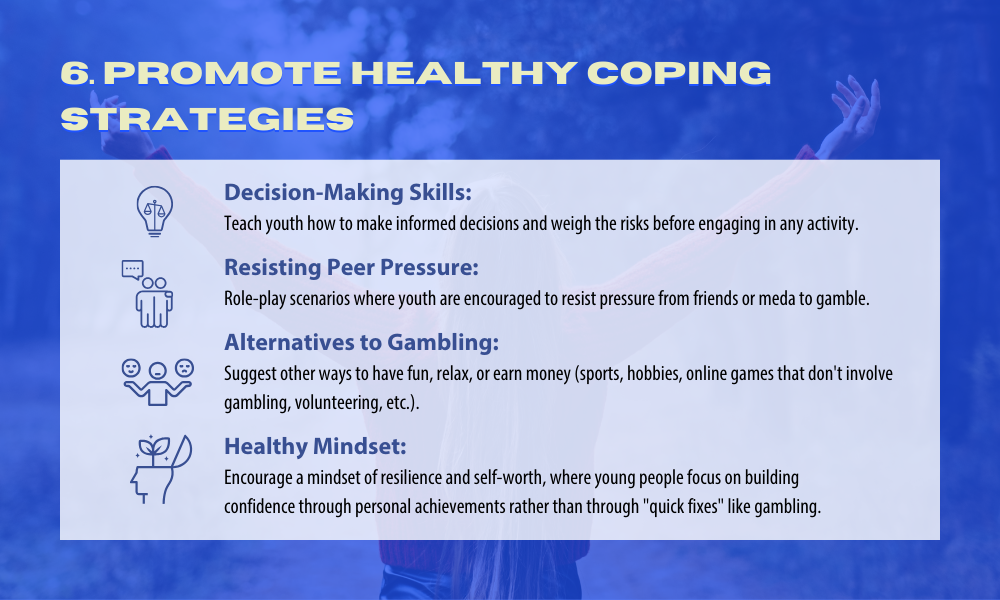
Decision-Making Skills: Teach youth how to make informed decisions and weigh the risks before engaging in any activity.
Resisting Peer Pressure: Role-play scenarios where youth are encouraged to resist pressure from friends or media to gamble.
Alternatives to Gambling: Suggest other ways to have fun, relax, or earn money (sports, hobbies, online games that don’t involve gambling, volunteering, etc.).
Healthy Mindset: Encourage a mindset of resilience and self-worth, where young people focus on building confidence through personal achievements rather than through ”quick fixes” like gambling.
7. Introduce Help and Support Resources
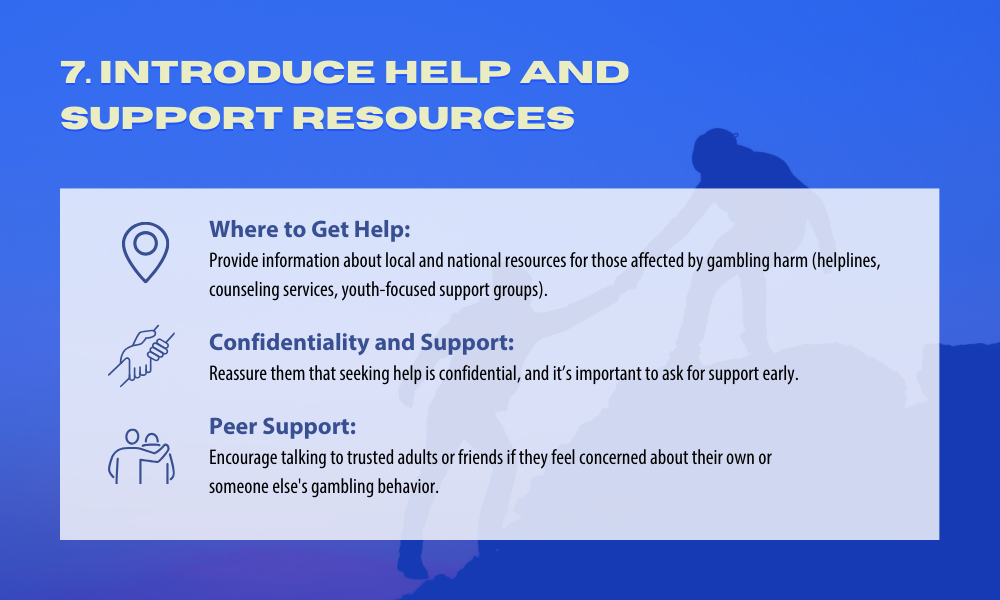
Where to Get Help: Provide information about local and national resources for those affected by gambling harm (helplines, counseling services, youth-focused support groups).
Confidentiality and Support: Reassure them that seeking help is confidential, and it’s important to ask for support early.
Peer Support: Encourage talking to trusted adults or friends if they feel concerned about their own or someone else’s gambling behavior.
8. Interactive Activities
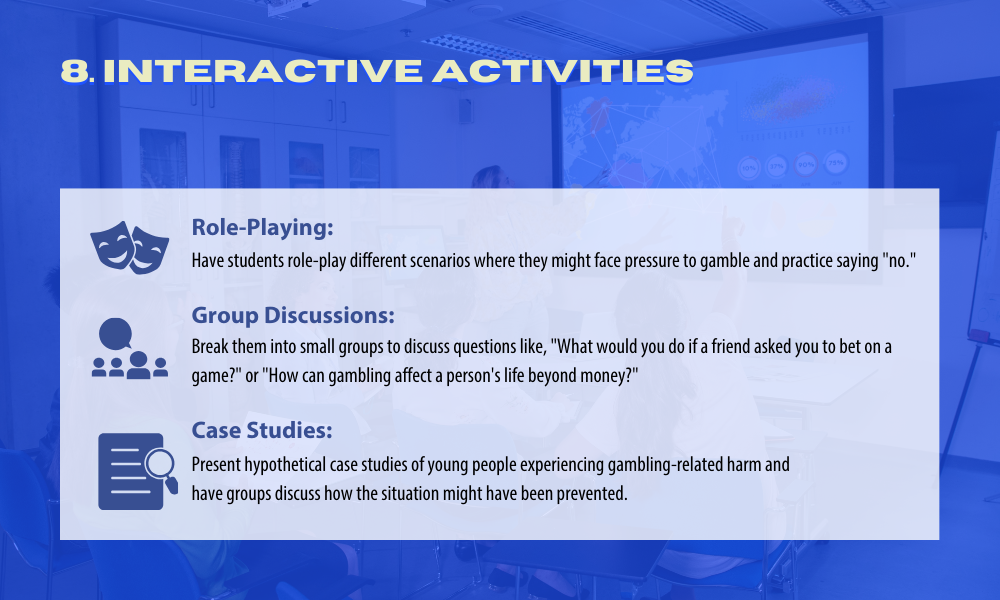
Role-Playing: Have students role-play different scenarios where they might face pressure to gamble and practice saying ”no.”
Group Discussions: Break them into small groups to discuss questions like, ”What would you do if a friend asked you to bet on a game?” or ”How can gambling affect a person’s life beyond money?”
Case Studies: Present hypothetical case studies of young people experiencing gambling-related harm and have groups discuss how the situation might have been prevented.
9. Q&A Session
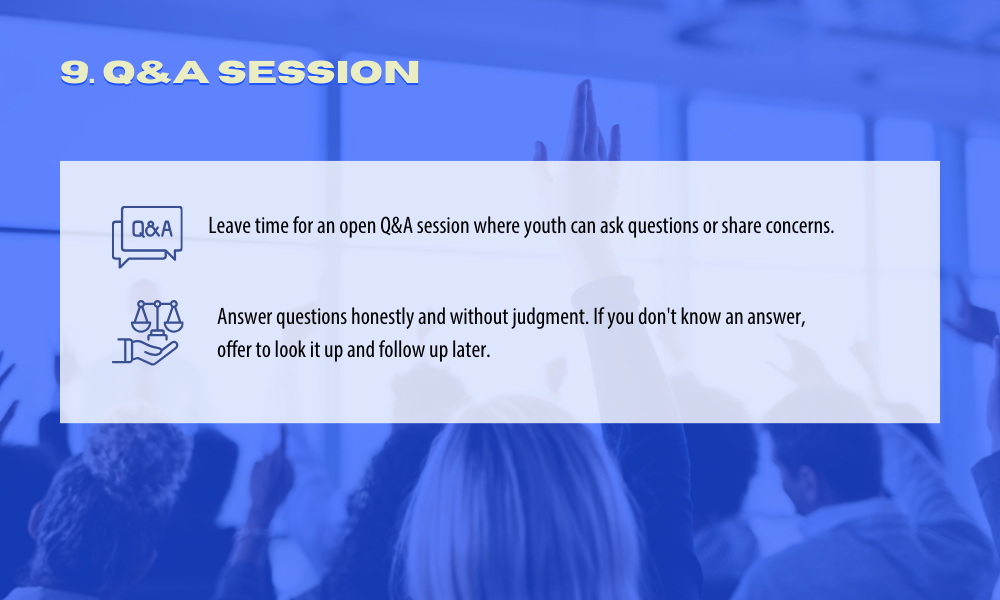
Leave time for an open Q&A session where youth can ask questions or share concerns.
Answer questions honestly and without judgment. If you don’t know an answer, offer to look it up and follow up later.
10. Provide Takeaway Materials
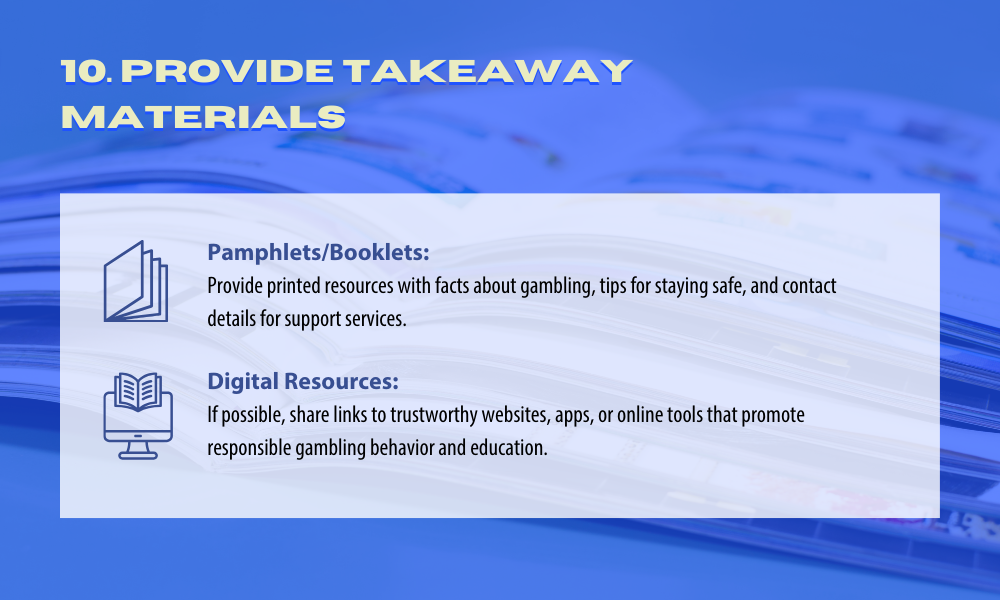
Pamphlets/Booklets: Provide printed resources with facts about gambling, tips for staying safe, and contact details for support services.
Digital Resources: If possible, share links to trustworthy websites, apps, or online tools that promote responsible gambling behavior and education.
11. Create an Action Plan

Commitment Cards: Encourage youth to write down one action they will take to stay safe from gambling harm, such as ”I will talk to a trusted adult if I ever feel pressured to gamble” or ”I will explore new hobbies instead of gambling.”
Follow-up Sessions: If possible, consider offering follow-up sessions to reinforce key messages and provide ongoing support.
12. Evaluation and Feedback

At the end of the session, ask for feedback to improve future sessions. You can use surveys or simple questions like, ”What was one thing you learned today?” or ”How do you plan to use what you learned?”
Additional Tips:
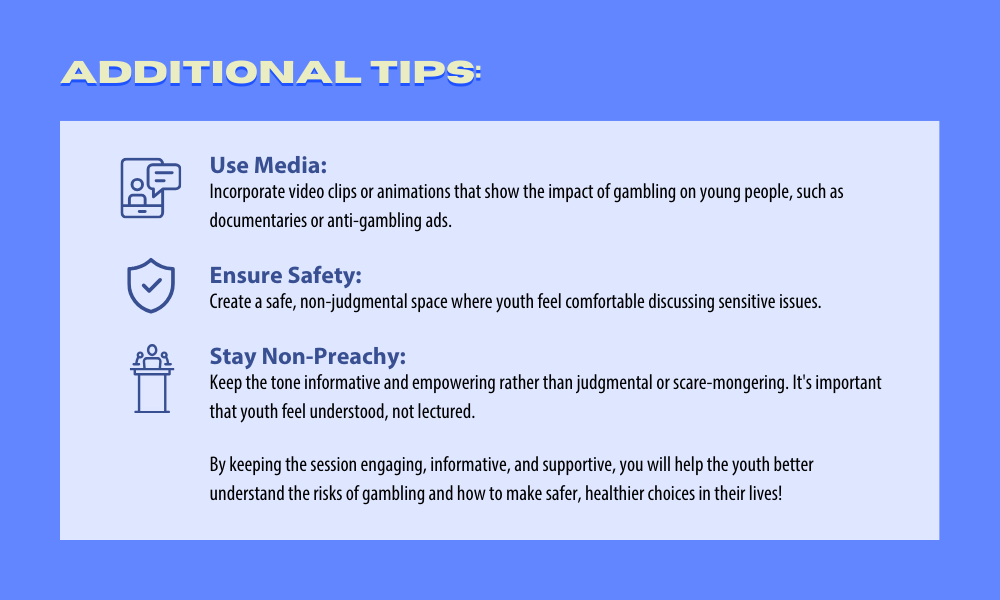
Use Media: Incorporate video clips or animations that show the impact of gambling on young people, such as documentaries or anti-gambling ads.
Ensure Safety: Create a safe, non-judgmental space where youth feel comfortable discussing sensitive issues.
Stay Non-Preachy: Keep the tone informative and empowering rather than judgmental or scare-mongering. It’s important that youth feel understood, not lectured.
By keeping the session engaging, informative, and supportive, you will help the youth better understand the risks of gambling and how to make safer, healthier choices in their lives.